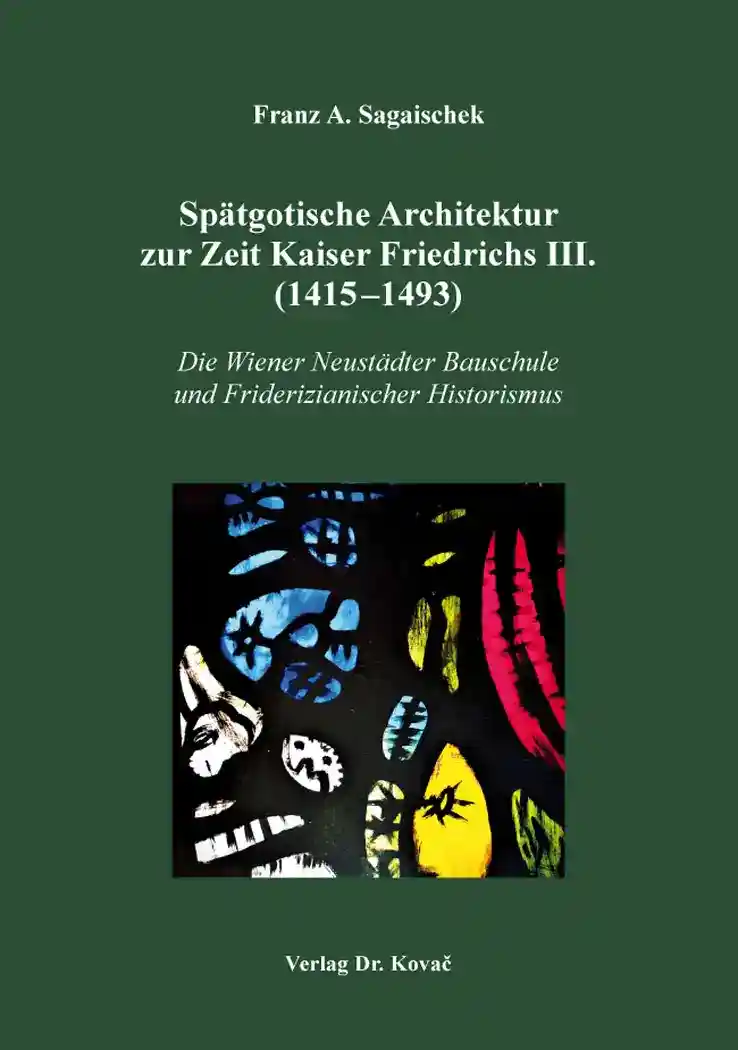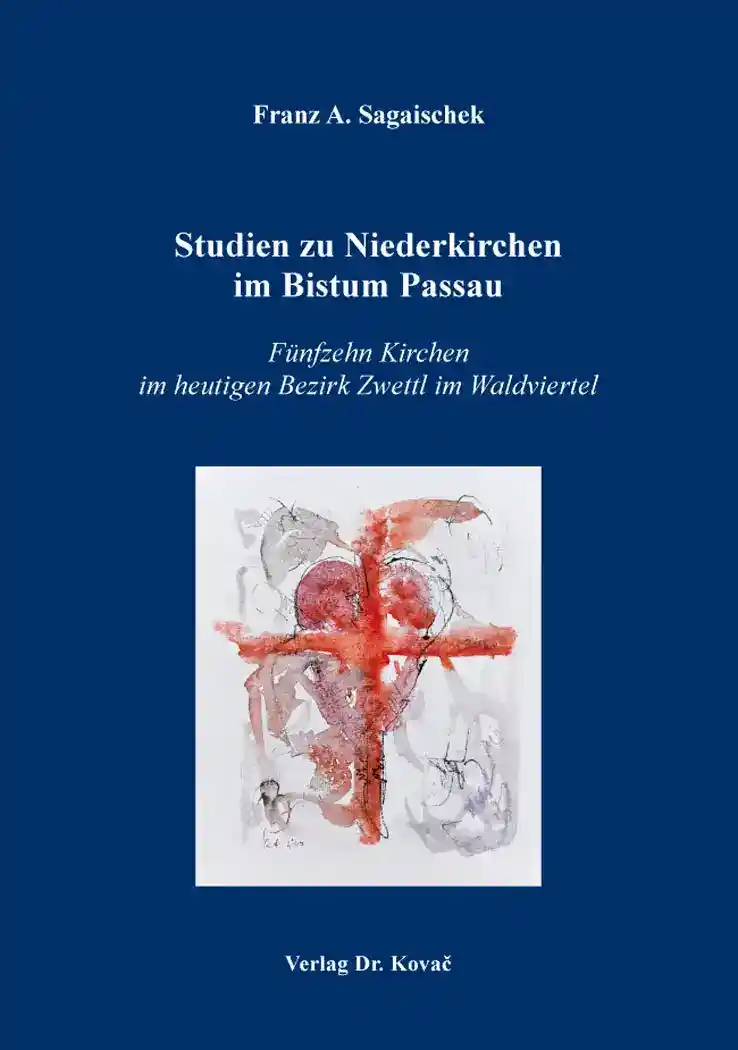Franz A. SagaischekSpätgotische Architektur zur Zeit Kaiser Friedrichs III. (1415–1493)
Die Wiener Neustädter Bauschule und Friderizianischer Historismus
Studien zur Geschichtsforschung des Mittelalters, volume 41
Hamburg 2020, 198 pages
ISBN 978-3-339-11726-7 (print)
ISBN 978-3-339-11727-4 (eBook)
Rezension
[…] Sagaischek ist angetreten, eine Forschungslücke zu schließen, da es bisher eines kritischen Überblicks über die im Raum Wiener Neustadt prosperierende Bautätigkeit jener Epoche ermangelte. Dies wird vom Autor nun nachgeholt und sogar außerhalb Niederösterreichs bzw. der historischen Erblande gelegene Regionen erfasst. Die hier gewählte Perspektive bezieht etwa auch Schwaben, Sachsen oder Böhmen mit ein und unterwirft neuere Forschungsmeinungen zum Wiener Stephansdom – etwa eines Johann Josef Böker – einer gründlichen und teils widersprechenden Betrachtung.[…] Nach einer in der Geschichtsforschung vorgenommenen Neubewertung der Regierungszeit Kaiser Friedrichs III. ist eine Untersuchung hoch willkommen, welche den seitens der Architekturgeschichte längst erkannten Eigenwert besagter Epoche aus neuerer Sicht in Erinnerung ruft.
About this book deutschenglish
Frederick III. becomes 1439 duke of Austria, 1440 german king, and after his accession to the throne he turns Wiener Neustadt into one of his residence cities. Although in the end there is no written tradition of an own manson’s guild in Wiener Neustadt, to literature – in relation to the entire development of the art of construction – it is a fact, that there was a centre of architecture that created around Wiener Neustadt and also influenced far into Styria. While a manson’s guild is clearly documented in Vienna, there are only a few or no written references for Wiener Neustadt, also for Graz.
The period of time dealt with in the thesis coincides largely with the reign of Frederick III (1415–1493), who becomes the 1452 Roman-German emperor. Tradition and continuity based on the first Habsburgs form an important factor of power, which is also reflected in architecture. The retrospectively held design at that time is apparently, intentionally and above all with great influence on the near, but also further environment. Imperial architecture at that time is called „Frederick’s Historicism“. The use of retrospective design elements in connection with the sovereign personality of Emperor Frederick III. as a prominent client is, over-regional, almost unique.
From the interpretation of his time, Frederick develops an attitude that inevitably has to lead to “Historicisms”. Just as this is expressed in his religious stance, in his new (old) relationship with the church and thus with the Pope, this sentiment is also reflected in „his“ architecture, in case he has been able to influence it. This is clearly legible to buildings in Wiener Neustadt. If one accepts this as given, the term “Frederick ’s Historicism” has at any rate its authority and can be regarded as a „time style“ as such. Frederick ’s intention is to reform the time, in the sense of re-form, that is the restoration of a time that has already existed.
The result is, even though his sometimes described „inaction“ is often brought to the fore, at least a United Kingdom, which has not existed in size so far and offers his son Maximilian the basis for a further even more comprehensive reign, as well as an architecture, which is unique in its time.
Keywords
ArchitekturBauforschungBaukunstFriderizianischer HistorismusFriedrich III.Friedrichs ItinearGewölbeformenHabsburgerHeraldikKunstgeschichteMittelalterSpätgotikSteiermarkWienWiener NeustadtYour book at Dr. Kovač Publishing House
Weiteres Buch des Autors
Studien zu Niederkirchen im Bistum Passau
Fünfzehn Kirchen im heutigen Bezirk Zwettl im Waldviertel
Hamburg 2020, ISBN 978-3-339-11456-3 (Print) | ISBN 978-3-339-11457-0 (eBook)

